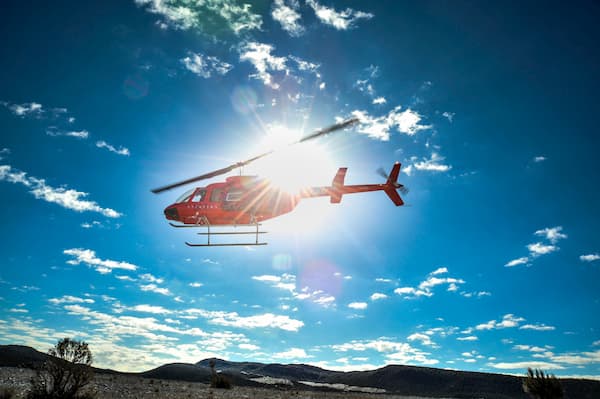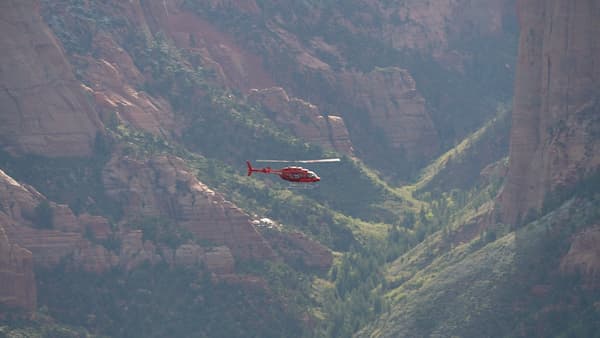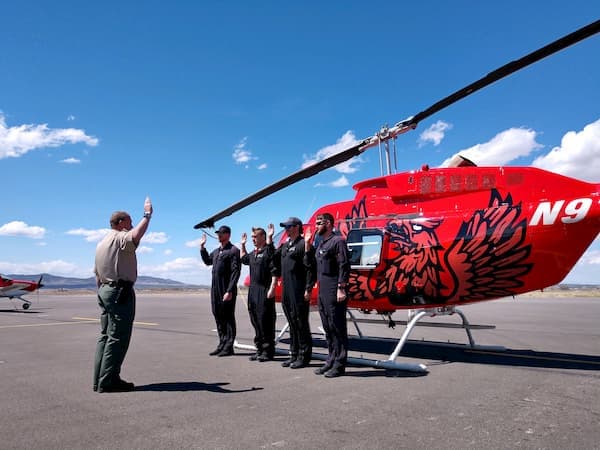Private Pilot’s License vs Commercial Pilot’s License
Posted: August 25, 2020 | Author: Jaidyn Crookston | Read Time: 7 minutes
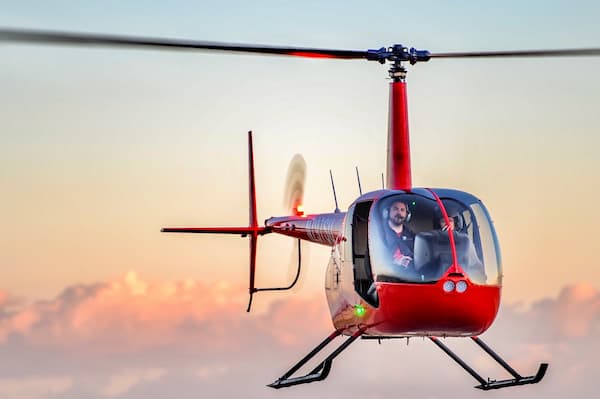
When you decide to become a helicopter pilot, there are many different routes you can go. One of the first things you need to decide before becoming a pilot is whether you want to get a private pilot’s license or continue training and get a commercial pilot’s license.
The difference between these two licenses is simply that with a commercial license you can be paid to fly a helicopter, while with a private license you’ll only be able to fly a private helicopter and won’t get paid to do so.
It’s important to have an idea of what you want to do as a helicopter pilot before you begin training. If you only want to fly a personal helicopter and not get paid, then all you need is a private pilot’s license. If you want to enter the aviation industry as a helicopter pilot and work your way up to making on average about $95,000 a year, then you’ll need a commercial pilot’s license.
Differences between private and commercial pilot licenses.
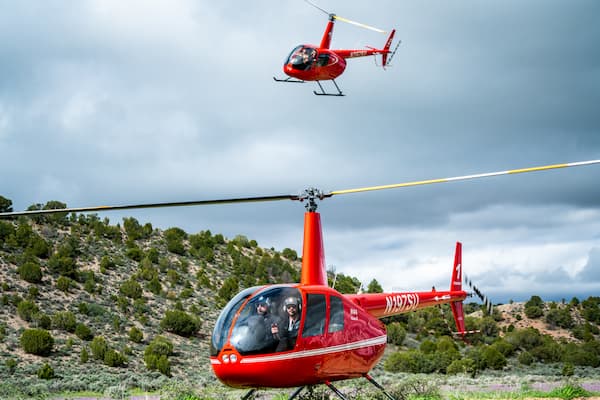
The time it takes to get each license
The time it takes to earn each license depends on a couple of factors, one of the biggest being where you choose to get your training. Before choosing a place to train, decide whether you want to train with a flight school that’s attached to a university, like Southern Utah University Aviation, or one that has no ties to a university.
Students that choose to train at a university flight school, earn an associate’s or bachelor’s degree in addition to their pilot license. A degree is helpful when entering the aviation industry because graduates have more flight hours and experience and are better prepared to fly a commercial helicopter. However, a degree is not required to become a helicopter pilot.
Knowing whether or not you would like to earn a commercial pilot's license can also influence where students choose where to train. Those who don’t want to pursue a commercial pilot’s license and plan to stop with a private license, will most likely want to seek training from a non-university flight school. Most university flight schools require students to continue training until they’ve earned both their private and their commercial licenses.
In order to earn either license, students must check off certain requirements including flying a certain amount of hours, both with an instructor and solo. After earning a private license, those hours can be applied toward a commercial license as well.
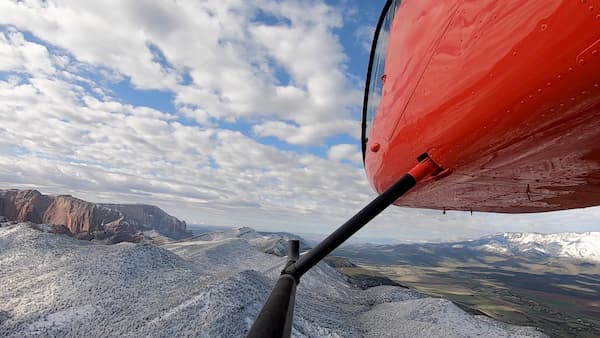
The requirements to get a private license include the following:
- Be at least 17 years old
- Pass the FAA medical exam
- Have at least 40 flight hours, with at least 20 hours of instruction and 10 hours of solo flight
- Pass written, oral, and practical flight tests
Getting a private license can take anywhere from a few weeks to a year, depending on how much time you’re able to commit to flying and how available the instructors are. At SUU Aviation it will typically take two semesters to earn your private license.
The requirements to get a commercial license include the following:
- Have a private pilot’s license
- Be at least 18 years old
- Keep up to date on the FAA medical exam
- Have 150 flight hours
- Pass written, oral, and practical flight tests
Again, how long it takes to get this license depends on the training and how much time you’re able to commit. At SUU Aviation, it will take another two semesters to earn a commercial pilot’s license, after earning a private license. To earn a bachelor’s degree at SUU Aviation, students then train for another semester and earn a CFI and CFII (Certified Flight Instructor and Certified Flight Instructor Instrument). This prepares graduates to enter the industry as a fully qualified, well-rounded helicopter pilot.
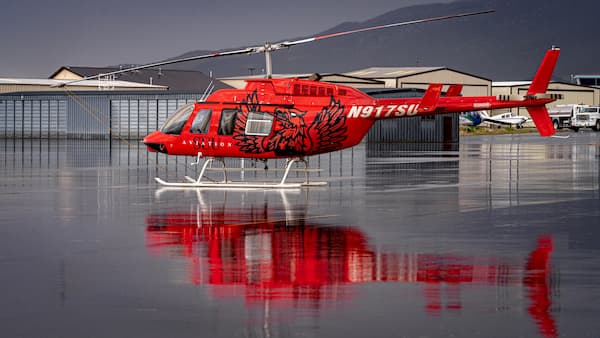
The cost of getting each license
The cost to get each license will depend on these factors:
- Which aircraft you’re training on
- How many flight hours you’ll get
- Whether or not you’re getting a degree
- If you’re getting advanced training
- Maintenance and instruction fees
- Where you train
Getting only a private license will be cheaper than getting a commercial license because the training is less intensive and will take less time. And for a commercial license, students are paying for two trainings, a private license then a commercial license.
Deciding to train at a university flight school adds to the cost of each license because students also pay tuition and student fees. However, graduating from a program with a university degree will help you get jobs and earn more money in the future. In fact, the return on education for helicopter pilots is even higher than it is for doctors and lawyers. This means that a helicopter pilot will usually earn about $45 for every $1 they spent on their education.
Training at a university flight school also means students are eligible for scholarships, loans, and financial aid. If you’re able to get enough scholarships and financial aid, you’ll have to pay very little out of pocket for your flight training. If you train at a non-university flight school then you won’t qualify for federal financial aid or student loans, but some scholarships may still be available to you.
If you’re a veteran and have the Post 9/11 GI Bill®, then chances are that your flight training will cost very little to nothing. If this is the case, almost all of your training may be paid for by the VA. Only a few flight schools are able to take advantage of this incredible opportunity, and SUU Aviation is one of them.
Should you get a commercial license?
When deciding if you want to get a commercial license or stop at a private license, it really comes down to what you want to do as a helicopter pilot. If you want to work as a pilot and earn money, you’ll have to get a commercial license. If you want to purchase your own helicopter or borrow a friend’s, then all you’ll need is a private license. Keep in mind that owning and maintaining a private helicopter is extremely expensive and is not realistic for most people. If you have the means to own and maintain a helicopter, then having your private license will give you a great opportunity and flying helicopters will be a fun way to spend your time.
Most people who earn a private license go on to earn a commercial license as well. After a commercial license, students continue training and earn a CFI, CFII, and Instrument rating. All of these licenses will help you as you enter the industry and fly helicopters for a living.
On top of these official licenses, some flight schools offer advanced training that will better prepare students for the industry and set them above the competition. Some of these advanced training include long-line training, external load, mountain operations, night vision goggles, and turbine transition. Finding a program that includes this advanced training as part of the regular curriculum, like SUU Aviation, ensures you’re getting the best flight training available. This advanced training will uniquely prepare you to face any challenges that come your way while flying helicopters.
If you choose to work as a helicopter pilot there are many different industries available to work in. Nearly every industry out there uses helicopters in some capacity. Here are a few that may help you decide whether you want to fly helicopters for a living.
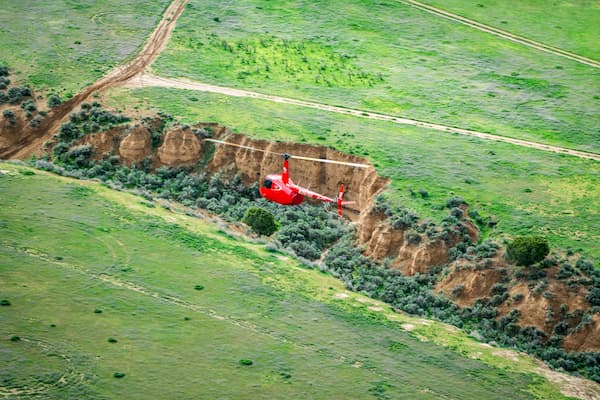
- Tour companies all around the world
- Oil rig companies
- Law enforcement
- Emergency medical services
- Corporate businesses
- Agricultural companies
- Utility companies
- And so much more!
Becoming a helicopter pilot will give you lots of opportunities throughout life. You’ll get to spend work hours thousands of feet above the ground, in control of an amazing machine. How cool is that?
If you have questions about a private license versus a commercial license or learn more about SUU Aviation, reach out to SUU Aviation. Tours of the hangar and facilities are available, giving you the chance to meet our amazing staff.
Produced by SUU Aviation
The university's fleet includes 16 airplanes, 23 helicopters by the end of 2020, and state of the art maintenance training facilities. SUU Aviation offers advanced and relevant flight training in the safest and most efficient way possible. The program continues to be on the cutting edge of the industry, training tomorrow's aviation leaders.
This article was published more than 3 years ago and might contain outdated information or broken links. As a result, its accuracy cannot be guaranteed.
Tags: Aviation


